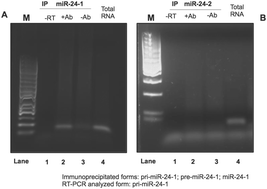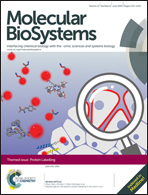An autoregulatory network between menin and pri-miR-24-1 is required for the processing of its specific modulator miR-24-1 in BON1 cells
Abstract
Multiple endocrine neoplasia type 1 (MEN1) is a rare hereditary cancer complex syndrome manifesting a variety of endocrine and non-endocrine neoplasms and lesions. MEN1 is characterized by tumours of the parathyroids, of the neuroendocrine cells of the gastroenteropancreatic tract, and of the anterior pituitary. The MEN1 gene, a tumour suppressor gene, encodes the menin protein. Loss of heterozygosity (LOH) at 11q13 is typical of MEN1 tumours in agreement with Knudson's two-hit hypothesis. We previously showed that the MEN1 parathyroid tumorigenesis is under the control of an “incoherent feedback loop” between miR-24-1 and the menin protein that generates a “Gene Regulatory Network” (GRN) that mimics the second hit of Knudson's hypothesis and that could buffer the effect of the stochastic factors that contribute to the onset and progression of this disease. Here we show, in the BON1 cell line derived from lymphnode metastasis of a human carcinoid tumour of the pancreas, that menin binds specifically to the primary RNA sequence pri-miR-24-1 by promoting the miR-24-1 biogenesis. Network simulation showed a new feed-forward loop between menin, microRNA-24-1 and Musashi-1 proteins. This result shows a novel mechanism whereby menin, a RNA-binding protein, facilitates the processing of its specific miRNA by regulating the dynamics of the menin-miR-24 Gene Regulatory Network at the level of pri-miRNA processing.


 Please wait while we load your content...
Please wait while we load your content...